
The light of the sun rises, even in the dark of night, when moonbeams catch any sign of gold. Inherent to gold is a nobility; through the ages the metal does not rust or lose its luster. Artisans since antiquity gild the finest of relics to imbue them with mystique and an unspeakable energy. Since the first discovery of gold, humanity has sought to harness some divine power; perhaps gold is transformed in its contact with humans, just as Kaori Someya has done in her portraits ‘Singing for the Rocks’ and ‘Listening to the Wind.’
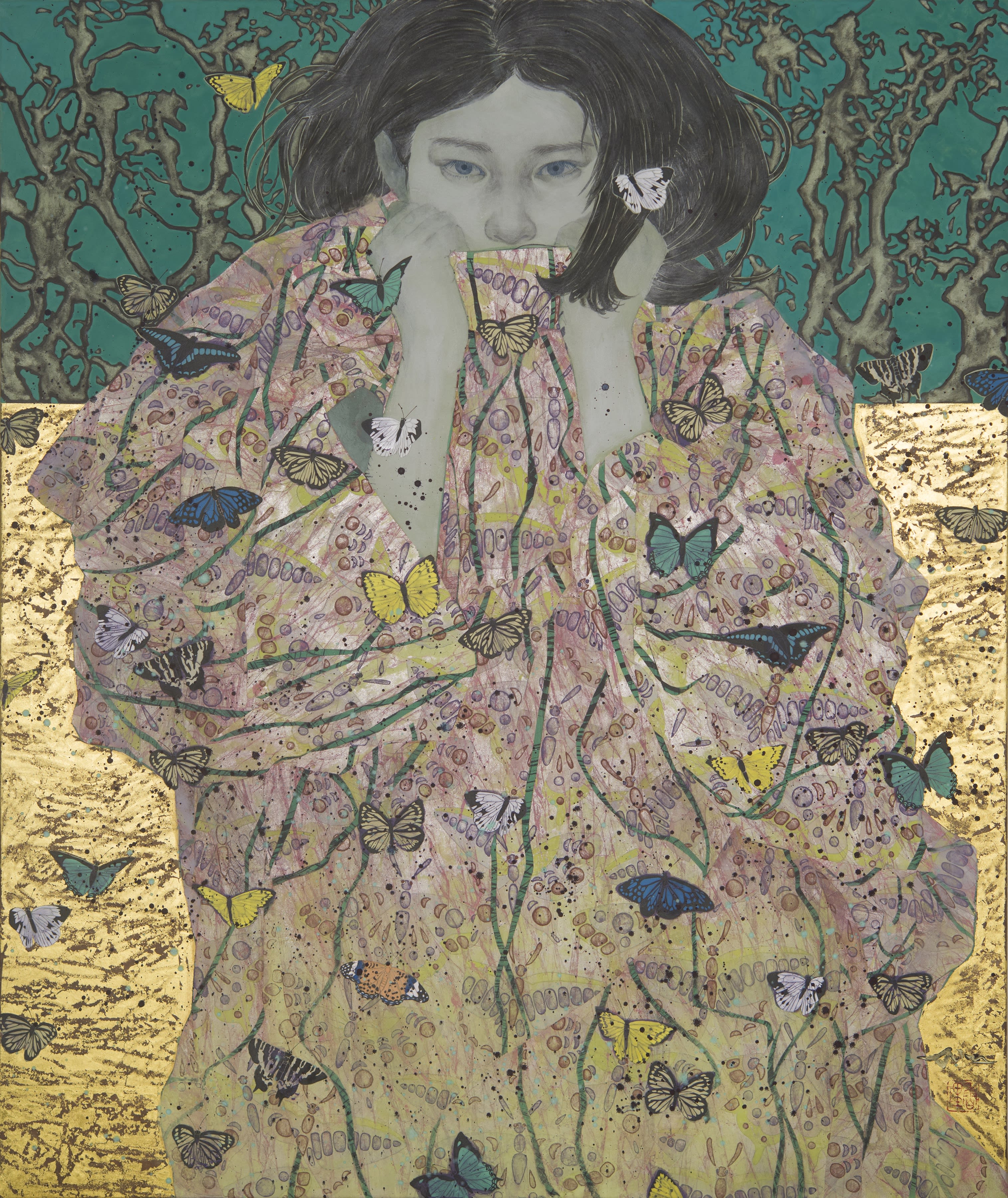
Kaori Someya, “Singing for the Rocks,” (A28761)
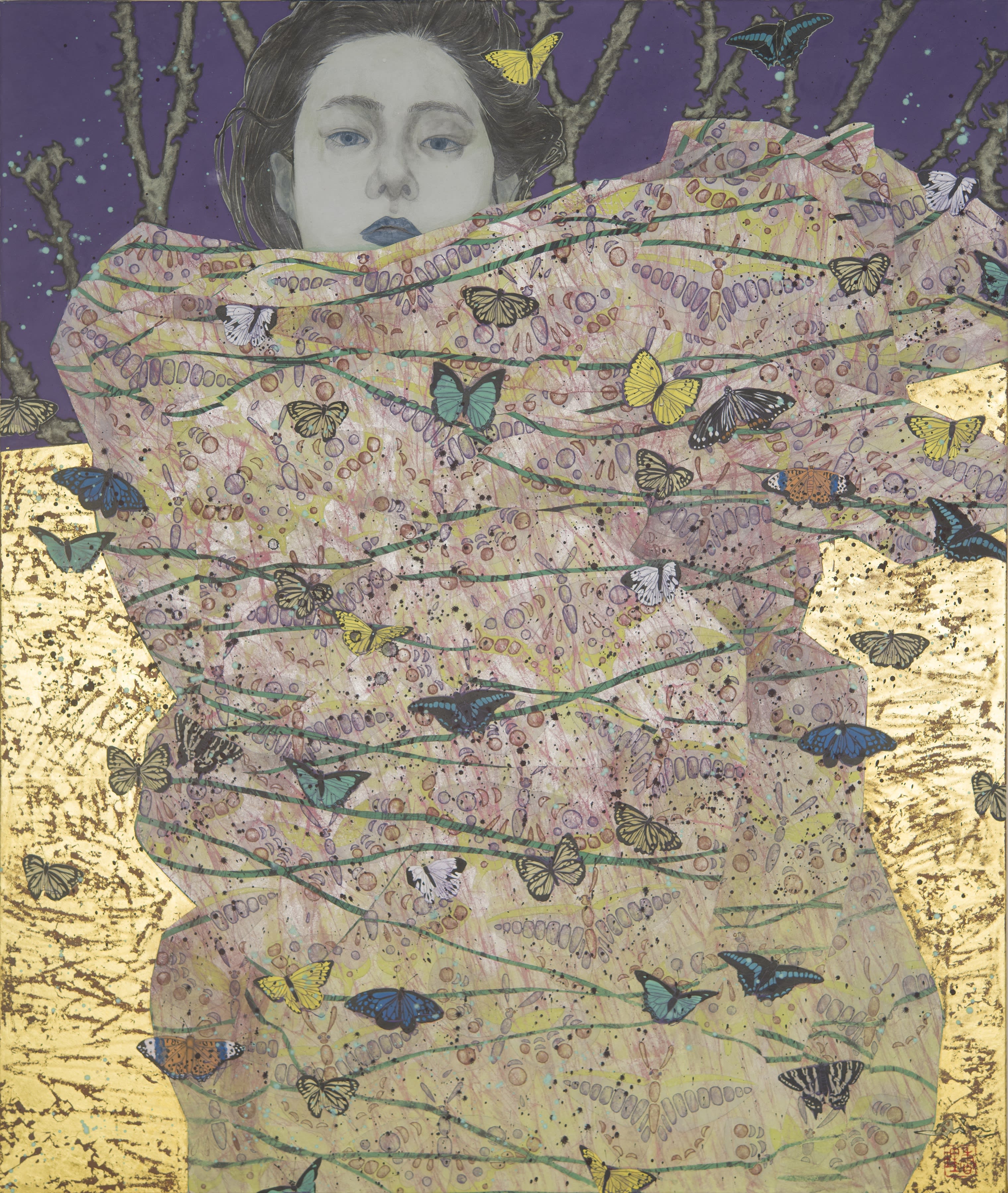
Kaori Someya, “Listening to the Wind,” (A28762)
Butterflies
Butterflies in myriad colors settle upon each figure as a washi paper collage. Samurai, wearing armor with elements of gold, also donned garments with the butterfly as a common motif; emerging from the humble caterpillar, butterflies symbolize change, dreams, and otherworldliness. Someya pairs the insect with shimmering gold as if the figures were of another dimension or afterlife. Gold leaf ruffled for texture with coarse salt and glittering platinum are placed behind in the ‘back-pasting’ urahaku technique.
Pines and the Moon
Gold is an immutable material, never rusting, never to lose its illustrious appearance. Similarly, the unshakable evergreen pine retains its needles even in the dead cold of winter. Pines line the grounds of the royal palace, serving as a motif that reflects the integrity of the imperial lineage.
The light of the moon is a reflection of the sun’s indominable rays. Duality and balance define the relationship between the heavenly bodies, contrasting silver with gold. The harmony of their opposition amplifies and exalts the natural luster.
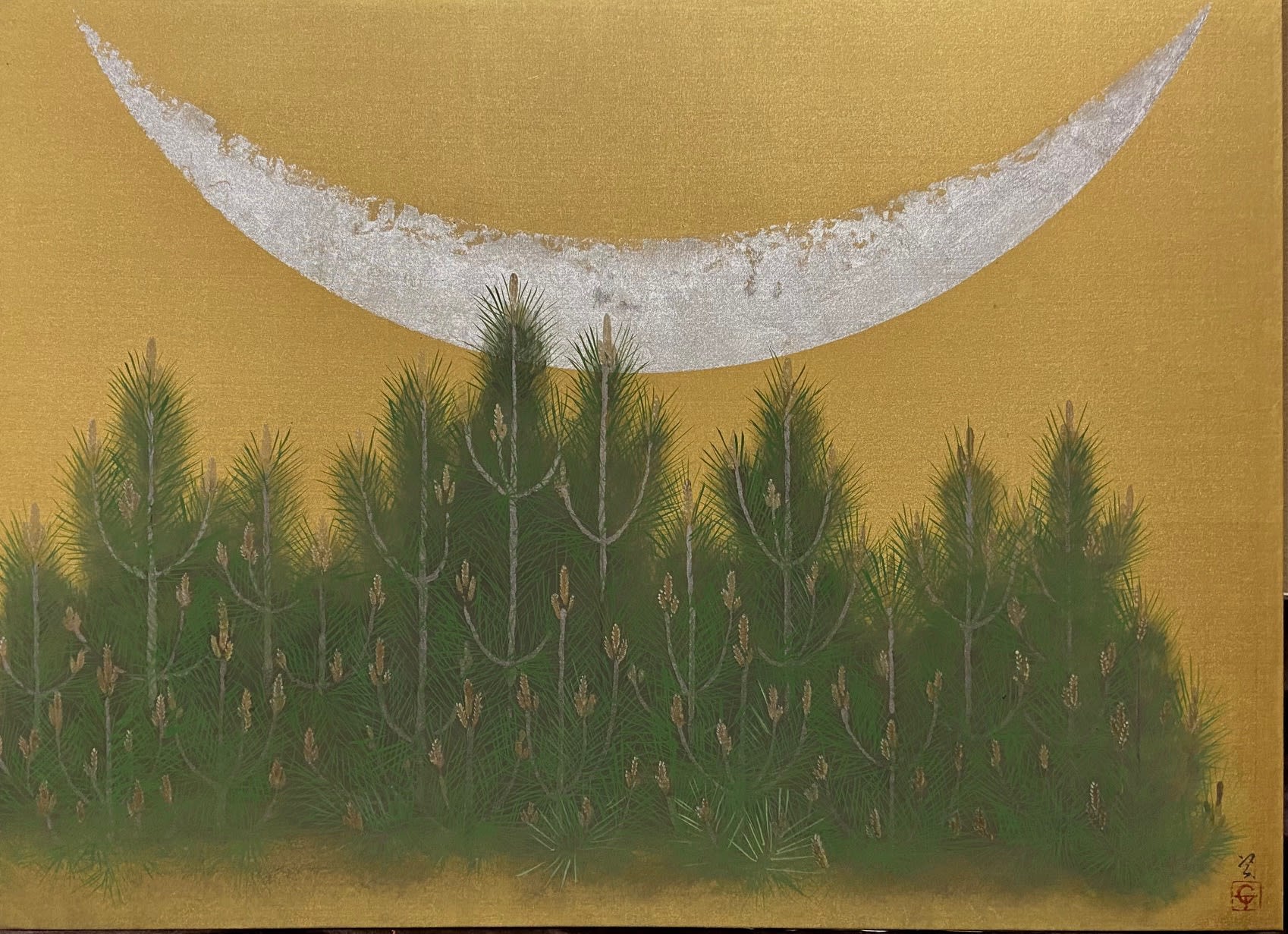
Ken Matsubara, “Gilded Mikazuki Crescent Moon,” (A24346)
Gold became a prized material among the patrons of Buddhism, adorning statues, temples, and ceremonial relics as an articulation of wisdom, purity, and divinity. Since codifying these associations over a millennia ago, the implicitly benevolent meaning of gold persists and is still used today to signal that which is eternal, transcending the boundaries of time.
Ginkgo
The ginkgo—naturally occurring in gold pigments as the seasons change—has persevered on planet Earth since the age of dinosaurs. Today, it is the symbol of the Tokyo metropolis, representing resilience and hope as the tree can live more than a millennium. Only as the autumn season approaches do the green leaves transform to brilliant gold; Shota Suzuki’s ‘Blowing Leaves, Ginkgos’ captures the moment in which a great gust of wind creates a vortex of glowing ginkgo leaves.
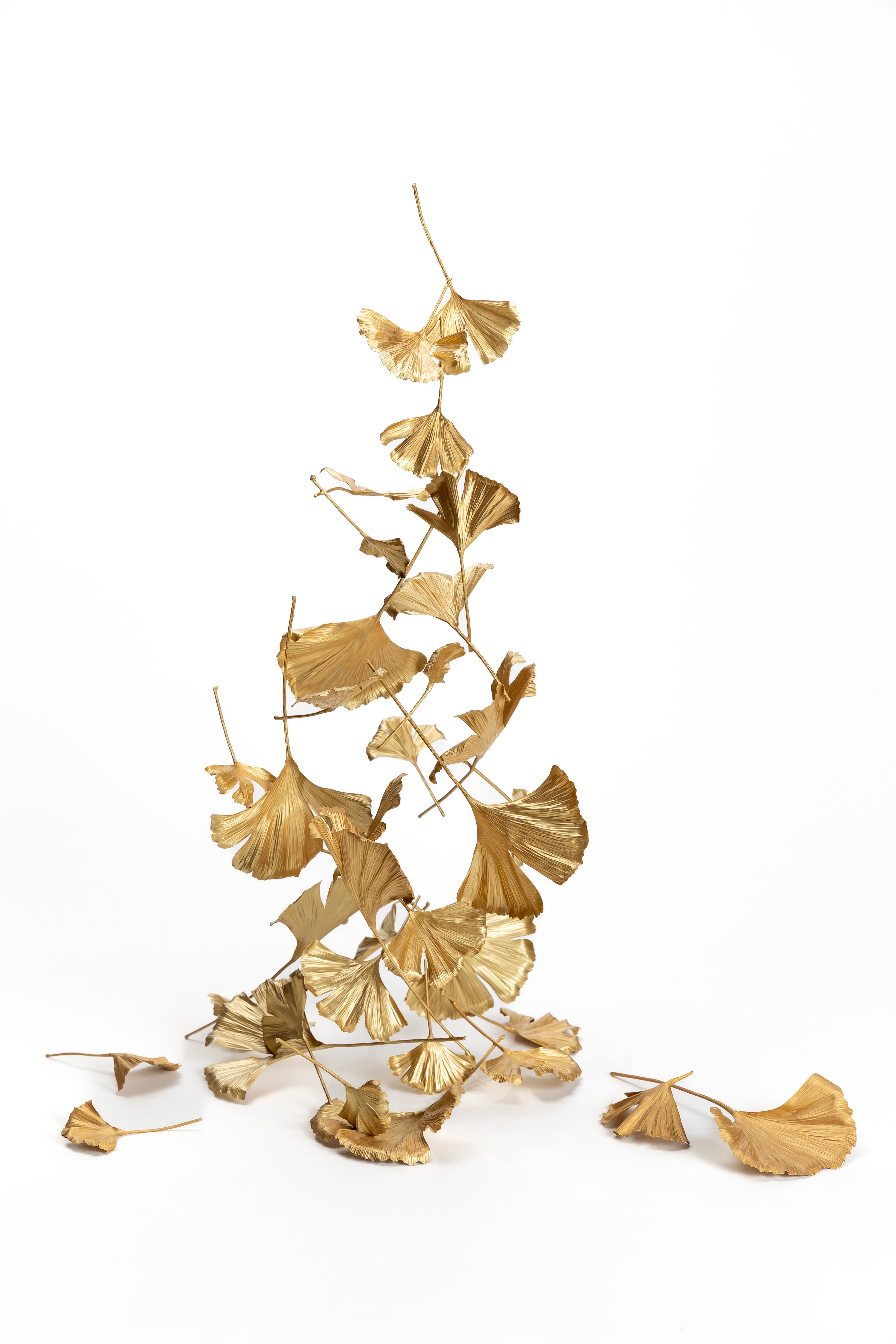
Shota Suzuki, ‘Blowing Leaves, Ginkgo’ (B28757)

Shota Suzuki, ‘Tiny Piece of Autumn, Ginkgo’ (B28758)
Superconductor
Terumasa Ikeda’s hypermodern raden pushes the transformation of earth's materials to great lengths within the Japanese lacquer tradition. As a superconductor, gold is a common metal used in electronics for its capacity to transmit energy and resistance to corrosion. Ikeda's core philosophy is timelessness; his intricate lacquers are not characterized by time and place, but rather they present a vision of science fiction. Numerals are an ancient invention, unchanged by time, and which today are the bedrock for communication and encryption. Ikeda's creation is made by lacquering gold leaf to the shell of white-lip oyster, which is then cut by laser; he deftly places the shells into the wet urushi lacquer in a descending pattern mimicking a magnificent sun shower rendered digitally.
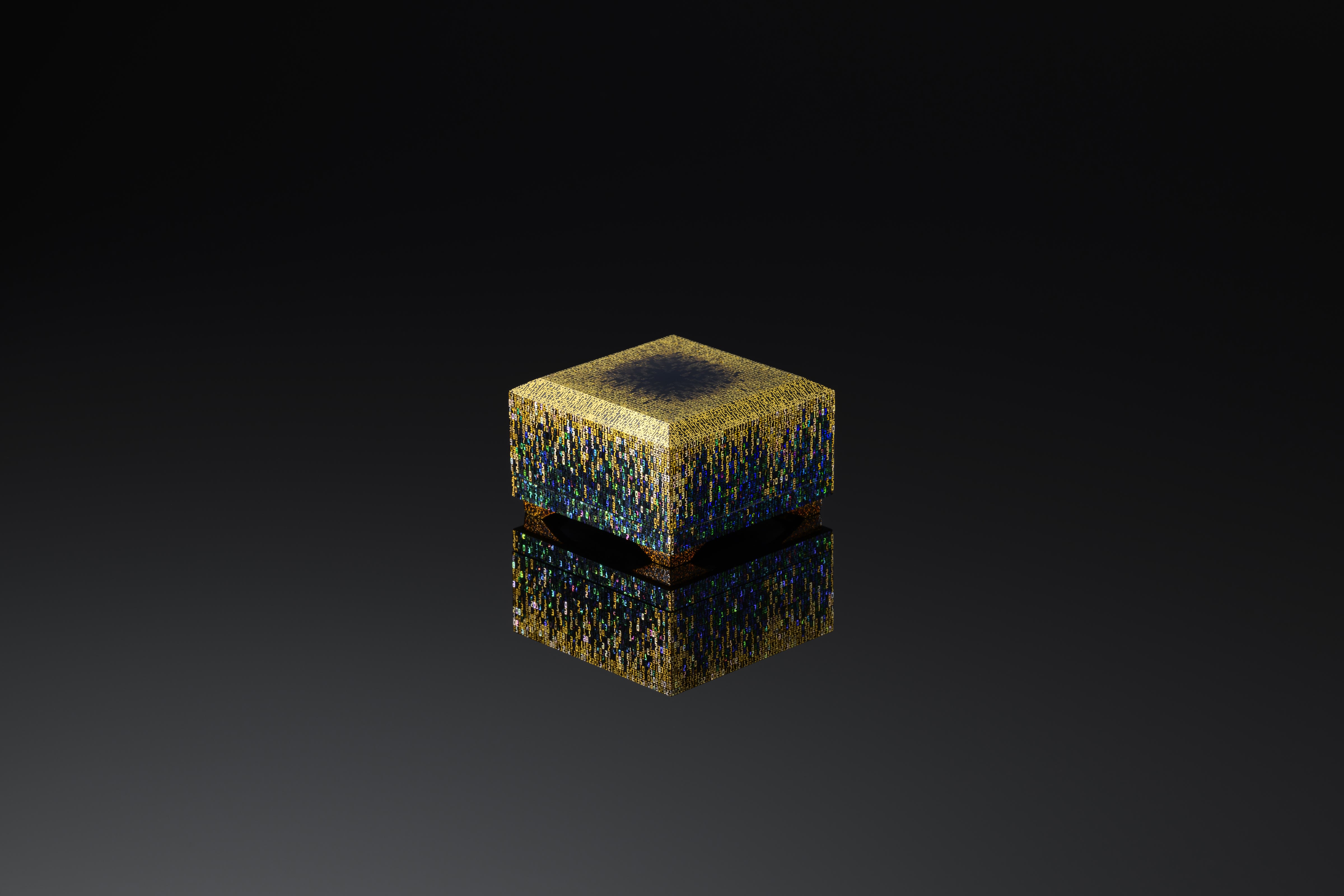
Terumasa Ikeda, ‘Radiant Rain, Incense Container,’ (C28840)


